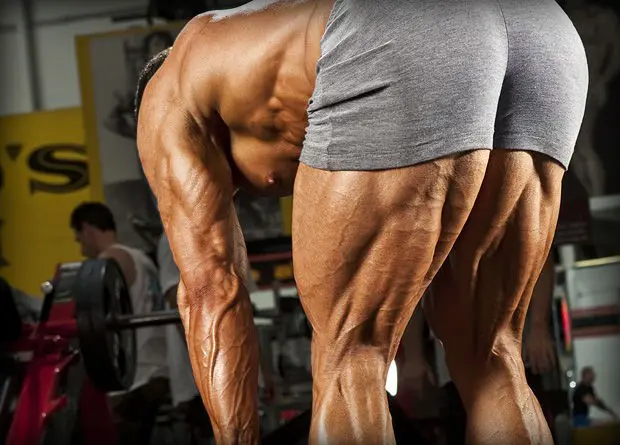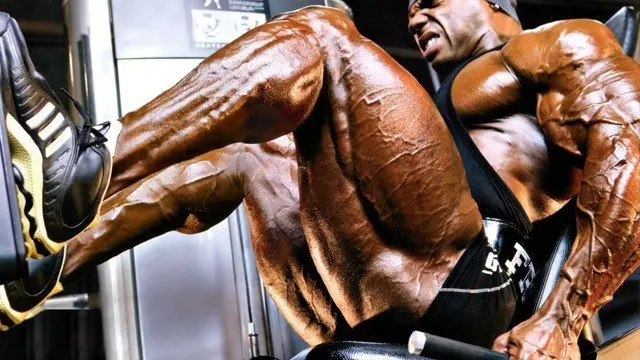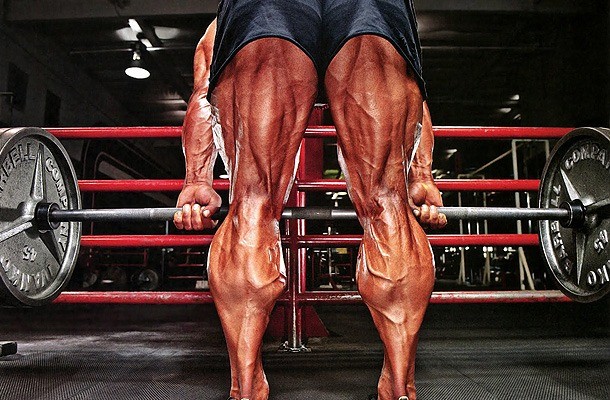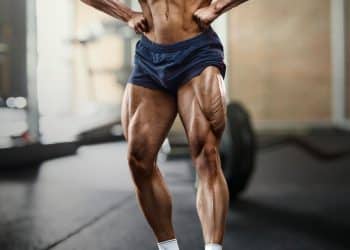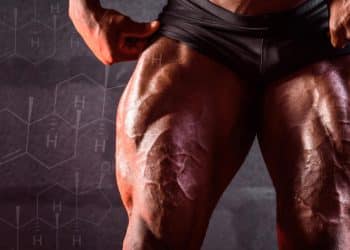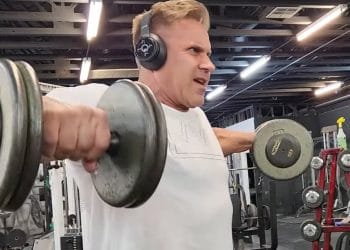If there was a “forgotten muscle” which too many gym-goers tend to neglect, it’d probably be the hamstrings. But if aesthetics, symmetry, and function are what you’re after then you must give them the same amount of attention than you would any other muscle.
Now, yes, the hamstrings do get stimulated during compound leg movements like the squat, deadlift, leg presses, etc. but they’re not the primary target muscle.
But it’s definitely not the same as setting time aside to ensure you’re training them to their maximum potential through utilizing isolation movements and specific training techniques.
So, we’ve got some great tips that we know you can benefit from because strategy and paying attention to the details can make a noticeable difference in your progress. But, before we get to the list, let’s talk a little about the anatomy and function of the muscle…
Hamstring Anatomy
The hamstrings are located on the lower portion of the posterior chain (backside of the body) above the calf muscles. And there are three muscles of the hamstrings which include the semitendinosus, semimembranosus and biceps femoris.
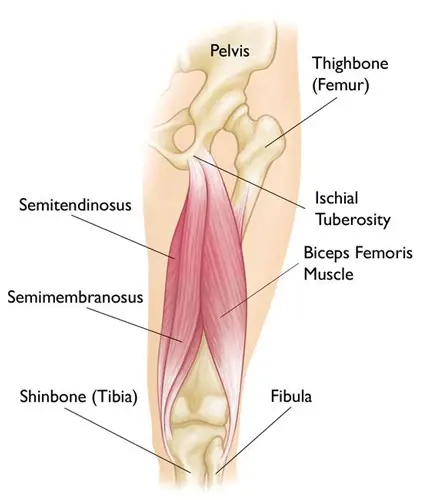
These muscles start at the bottom of the pelvis, and run through the femur, to their attachment point at the top of the tibia and fibula bones in the lower leg.
Level Up Your Fitness: Join our 💪 strong community in Fitness Volt Newsletter. Get daily inspiration, expert-backed workouts, nutrition tips, the latest in strength sports, and the support you need to reach your goals. Subscribe for free!
Function
The hamstrings function to eccentrically decelerate knee extension, create stability and is also a knee extensor. (1)
Now, there are two gait cycles of walking which involve the competing forces of top-down force into the ground due to gravity and the forces which are created from the bottom up due to the impact of the foot on the ground.
And because of how the hamstrings are attached, all three planes of movement involved in these competing forces must result in a full lengthening of the muscles for them to be able to effectively generate mechanical energy for the gait cycle.
When you walk forward, the hip flexes and the hamstring is fully lengthened at the proximal attachment. Then the knee extends prior to the heel making contact with the ground, which stretches the hamstring at the distal attachment.
Well, the hamstrings are actually the most active when the knee is fully extended right before the heel comes into contact with the ground. And this swing phase maximally loads the hamstrings eccentrically with elastic energy which is the main function of the muscle.
So, when the foot makes full contact with the ground, the hamstrings help to extend the knee rather than flex it to move the body forward.
Also check out our awesome hamstring exercises article.
Here are 9 essential hamstring training tips…
1- Don’t Neglect Unilateral (single-leg) Training
Not sufficiently training hamstrings is bad enough, but doing only two-legged hamstring exercises surely doesn’t make you exempt either.
Unilateral (affecting one side) training is a very important aspect of full, muscular development for every body part, and the hamstrings are no exception.
And the benefits include the prevention and correction of muscular imbalance so you’re not overusing the dominant side, improved core stability, rehabilitation, better balance, and isolation.
But when you train one muscle at a time, the same muscle on the opposite side also gets stimulated which is referred to as cross-education. This is very beneficial for rehab and overall functional purposes. (2)
So, in combination with your bilateral (affecting both sides) hamstring training, make sure to include some unilateral training for maximum development.
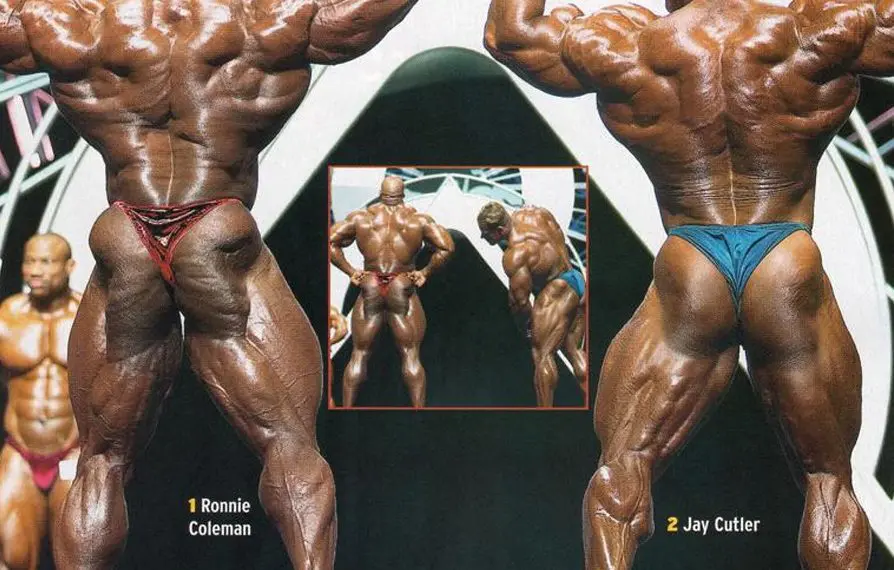
2. Always Use Full Range Of Motion
The hamstring is one of those muscles where a full range of motion is important to get a full stretch and activation for effective stimulation. And since the hamstring plays a crucial role in the overall function of the lower body; it’s even more important to work the muscle through its entire, movement path which mimics real-life performance and day to day activities. (3)
And oftentimes, tight hamstrings are an issue for a lot of people, which is another reason why it’s important to use a full range of motion. Now, this may be different for everyone because a full range of motion for the muscle is different than a joint’s range of motion.
So, you have to find what works best for your body and always perform your exercises in a controlled manner for optimum safety.
3. Always Include Movements Involving Hip And Knee Extension
We talked about how important it is for the hamstring muscles to be in a fully stretched position in order for the gait cycle to occur efficiently.
So, because the hamstrings are most active when the hip and knee is extended before contact with the ground, generously incorporating these movements is a no brainer. And thankfully, there are plenty of effective options which you may already be doing currently.
Now, these movements we’ve included all involve keeping the feet in contact with the ground in a closed kinetic chain; which means the distal end of the chain is in a fixed position.
And for a hamstring exercise to be considered a closed chain, your feet only have to be in contact with any surface and not necessarily the ground.
Here are a few superior hamstring exercises which effectively include both hip and knee extension…
Kettlebell swing
The kettlebell swing is a great exercise for its activation of the posterior chain. But one ACE study using EMG (electromyography) testing showed that it’s superior for activating the biceps femoris when compared to several commonly used hamstring exercises. (4)
Single-arm/single-leg Romanian deadlift (RDL)
This deadlift variation is very popular because it’s not as involved or taxing on the body as the conventional barbell deadlift because you’re only lifting the weight/dumbbells from the floor for the initial lift-off. And it’s also different because the range of motion is shorter.
Level Up Your Fitness: Join our 💪 strong community in Fitness Volt Newsletter. Get daily inspiration, expert-backed workouts, nutrition tips, the latest in strength sports, and the support you need to reach your goals. Subscribe for free!
It involves both hip and knee extension which is exactly what you want in an effective hamstring exercise. And according to another study that compared the effectiveness of several exercises, hamstring activity was shown to be maximized during the RDL, along with the glute-ham raise, so it’s an ideal option. (5)
Stability ball leg curl
The stability ball curl is an excellent closed kinetic chain exercise that effectively isolates the semitendinosus muscle of the hamstring. And you get the necessary extension of the knee.
But this convenient exercise doesn’t require additional weight other than your own body to work great which makes it a fantastic movement for home workouts too.
4. Do Both Open and Closed Kinetic Chain Exercises
The lying hamstring curl is an example of an open kinetic chain exercise because the legs move freely during the movement. And we already explained which type of movements qualify as a closed kinetic chain.
Now, the leg curl and several other open chain exercises are very effective and they absolutely do contribute to the strength and appearance of the hamstrings.
In fact, the same ACE study mentioned previously found that the prone leg curl elicits superior muscle activation compared to the other common hamstring movements tested. And that’s because it effectively isolates the muscle. (4)
But, they’re not ideal for preparing the muscle for real-life movements which include athletic performance or any other activities which involve an upright, standing position and coordination of muscles.
So, it’s best to use a combination of both for the visual and functional benefits they provide.
5. Train Them At Least Twice Weekly
Ok, so this one is more for the individuals who either skip out on hamstring training or who will admit that they don’t train them hard enough. If you haven’t trained them then you really need to play catch up.
But, training the hamstrings twice weekly is a good idea anyway to ensure you’re encouraging optimal growth and development through sufficient and consistent stimulation. And don’t worry about overtraining unless you’re doing a crazy amount of sets and reps while training multiple times weekly.
However, training volume and intensity are very essential components for muscle hypertrophy. And scientific research shows that muscle hypertrophy is dose-dependant with increased training volume. So, twice-weekly training can help to effectively achieve this. (6)
6. Incorporate Non-Weight Training Exercises
The hamstrings are maximally activated during the eccentric phase of a sprint, according to a study. So, doing a few rounds of sprints in a high-intensity interval training (HIIT) fashion can be an exceptional workout for targeting the muscle effectively while improving strength and sprint performance. (7, 8)
But any physical activity which provides high eccentric tension will effectively activate the hamstrings. Including activities that require an upward movement like walking/running on an incline treadmill.
7. Utilize Various Rep Ranges
The hamstrings consist of nearly an equal balance of fast and slow-twitch muscle fibers, so it makes sense to train them accordingly. Fast-twitch fibers are responsible for shorter and more explosive movements, while slow-twitch fibers are better suited for endurance activities endurance. (9)
And the best way to train for each type is higher reps for slow-twitch fibers and lower reps for fast-twitch fibers. (10)
But every muscle should still be trained using varying rep ranges to mix up the training stimulus. You’ll hit a plateau doing the same set and rep scheme every workout.
Plus, research does show that using high rep/low weight, and low rep/heavy weights both have significant benefits for improving muscle growth. Although, low rep/heavyweight sets seem to have a significant advantage for strength increases. (11)
8. Don’t Be Afraid To Train Heavy
Progressive overload is key for muscle hypertrophy and strength improvement. So, increasing the weight or repetitions every week is the best way to train hamstrings for maximum development. (12)
But we recommend having a lighter day as well, not only to maximize the slow-twitch fibers but to allow your joints and muscles to recover from your heavy days.
9. Be Consistent
One common issue regarding the neglect of rear muscles like the hamstrings and rear deltoids is that many individuals will train them for a certain period of time, and then forget about them after a number of workouts.
And then when they finally realize that they need to train these muscles again, they do for a short period of time and this cycle just continues. And what happens here is that these muscles become underdeveloped. Then you have to play catch up.
So, training consistency is essential for the hamstrings and it’s really one of the most important aspects of making long-term progress alongside training and diet.
Wrapping Up
If you want complete leg development for aesthetics, function, and power, then you cannot afford to skip hamstring training. It’s a muscle group that contributes so much lower body performance and so it must be trained accordingly.
But certain exercises and techniques should be utilized for maximum benefit and we hope you learned enough to put some of this information to use for your own training progress.
The hamstrings are an important piece of the physique puzzle and you don’t want to leave it out if you truly want to optimize your gains potential!

